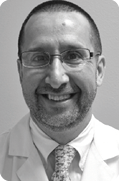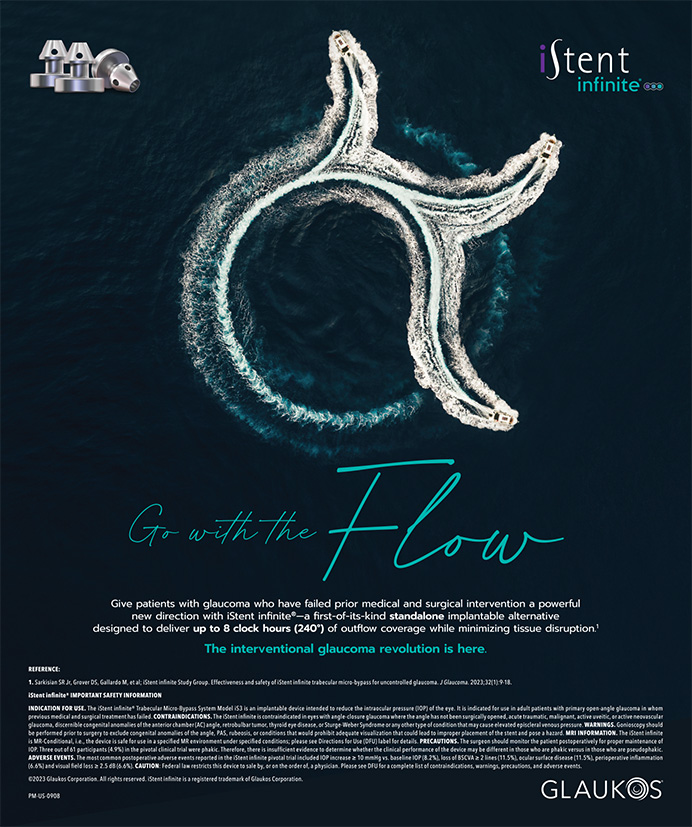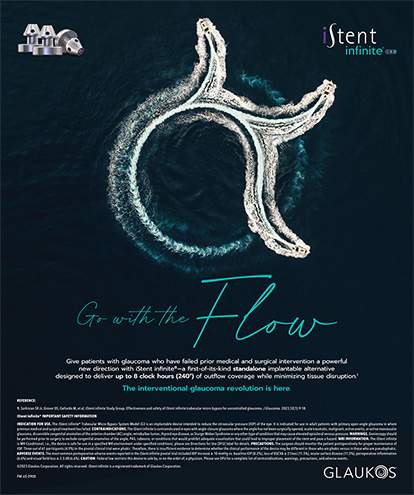


Smartphones put the power of a computer in the palm of the user’s hand, and people’s increasing reliance on these devices has positive and negative aspects.
One burgeoning area of smartphone and app development is their application to health care. Already, several add-on pieces of technology help patients track their own health, including heart and blood pressure monitors, blood glucose analyzers, and mobile breathalyzers. Apps and add-ons are also being developed for clinical use. Smart Vision Labs has created the SVOne, a Shack-Hartmann wavefront aberrometer that is fixed to an iPhone 5s (Apple) to function as an autorefractor. It measures refraction in a spherical range of -10.00 to +10.00 D (cylinder, -5.00 to +5.00 D) by taking and averaging five readings in about 5 seconds per eye. The technology is currently capable of detecting seven orders of aberrations, and the company is working on even more capabilities.
AT A GLANCE
• The SVOne is a Shack-Hartmann wavefront aber- rometer that is fixed to an iPhone 5s to function as an autorefractor. It measures refraction in a spherical range of -10.00 to +10.00 D by taking and averaging five read- ings in about 5 seconds per eye. .
• Because the SVOne can obtain refractive measurements that are equivalent to a desktop unit, it can substitute for the larger device. It adds a layer of flexibility to the clinic, because it can be transported from room to room, so if the desktop unit is occupied, the clinic’s operations can continue uninterrupted.
ACCURACY OF RESULTS
Not surprisingly, when most people hear “handheld autorefractor,” they are inclined to think its ability is limited. The SVOne is comparable to a desktop autorefractor in terms of accuracy, although it is far lighter, more flexible, and more portable.
In a recent clinical trial,1 the SVOne was tested against retinoscopy, subjective refraction, and two commercially available desktop autorefractor units. The purpose of the study was to assess refractive error with and without cycloplegia in 50 young adults with healthy vision. The study found high correlations between subjective refraction and the other four techniques. Overall, the SVOne provided measurements of refractive error that were “not significantly different from other subjective and objective procedures.”1
Again, this study’s population was limited to healthy eyes. To gauge the utility of the SVOne in eyes with potential pathology, one of the authors (BS) conducted a trial in his clinic (unpublished data 2015). Refraction was captured on 30 consecutive patients on an all-comers basis, including individuals with lens opacities, glaucoma, and other ocular pathologies. Each patient received a manifest refraction in addition to autorefraction with the SVOne and a desktop unit. The results of the small study showed a strong correlation between the results of the SVOne and the desktop unit. These preliminary findings could be used as the basis for further clinical investigations.
CLINICAL UTILITY AND FEATURES
A small, compact, and portable autorefractor has many potential applications in the clinical setting. Since it can obtain refractive measurements that are equivalent to a desktop unit, it can substitute for the larger device. It adds a layer of flexibility to the clinic, because it can be transported from room to room, so if the desktop unit is occupied, the clinic’s operations can continue uninterrupted.
The SVOne can also act as a failsafe against a potential equipment malfunction. If a clinic experiences technical difficulties with a desktop unit, the SVOne can serve as a replacement until the larger machine is repaired. At a price point around $4,000, the SVOne is much more affordable than the average desktop autorefractor, which typically ranges in price from $7,000 to over $20,000.
Because they can be sent remotely to a cloud platform that complies with the Health Insurance Portability and Accountability Act, data can be viewed by practitioners at any time, and they are safe and secured against local storage failures. This capability might be useful in telemedicine applications, with remote screenings reviewed by an investigator in a different locale.
This feature also makes the SVOne a potentially valuable tool in international settings and humanitarian efforts. A desktop autorefractor typically weighs around 50 pounds, making it burdensome to transport to a developing nation. Many eye care practitioners are hesitant to send new equipment to international settings for fear it will get damaged or lost. The SVOne weighs less than 1 lb, making it far more portable and convenient for mobile operations. It could also be a useful tool for screening programs at schools, nursing homes, and charitable clinic settings.
CONCLUSION
Any operator familiar with a desktop autorefractor should have no difficulty learning to use the SVOne, but it does take a little practice to ensure alignment. The device also may be more sensitive to large degrees of astigmatism compared with desktop units. This slight tradeoff may be offset by greater portability and flexibility.
Smart Vision Labs is already thinking about enhancing the design and functionality of the SVOne. The manufacturer is also looking for opportunities to expand the device’s capabilities. According to the company, it is developing functionality to add corneal topography to the platform technology.
1. Ciuffreda KJ, Rosenfield M. Evaluation of the SVOne: a hndheld, smartphone-based autorefractor. Optom Vis Sci. 2015;92(12):1113-1139.
Kenneth J. Ciuffreda, OD, PhD
• distinguished teaching professor, SUNY College of Optometry, New York, New York
• (212) 938-5765;kciuffreda@sunyopt.edu
• financial interest: none acknowledged
Mark Rosenfield, MCOptom, PhD, FAAO
• professor, SUNY College of Optometry, New York, New York
• (212)938-5766;rosenfield@sunyopt.edu
• financial interest: none acknowledged
Bernard Spier, MD, FAAO
• private practice at Northern New Jersey Eye Institute, Morristown, New Jersey
• clinical instructor at Rutgers Medical School, New Brunswick, New Jersey
• (973) 763-2203; sbern18@comcast.net
• financial disclosure: consultant to Smart Vision Labs


